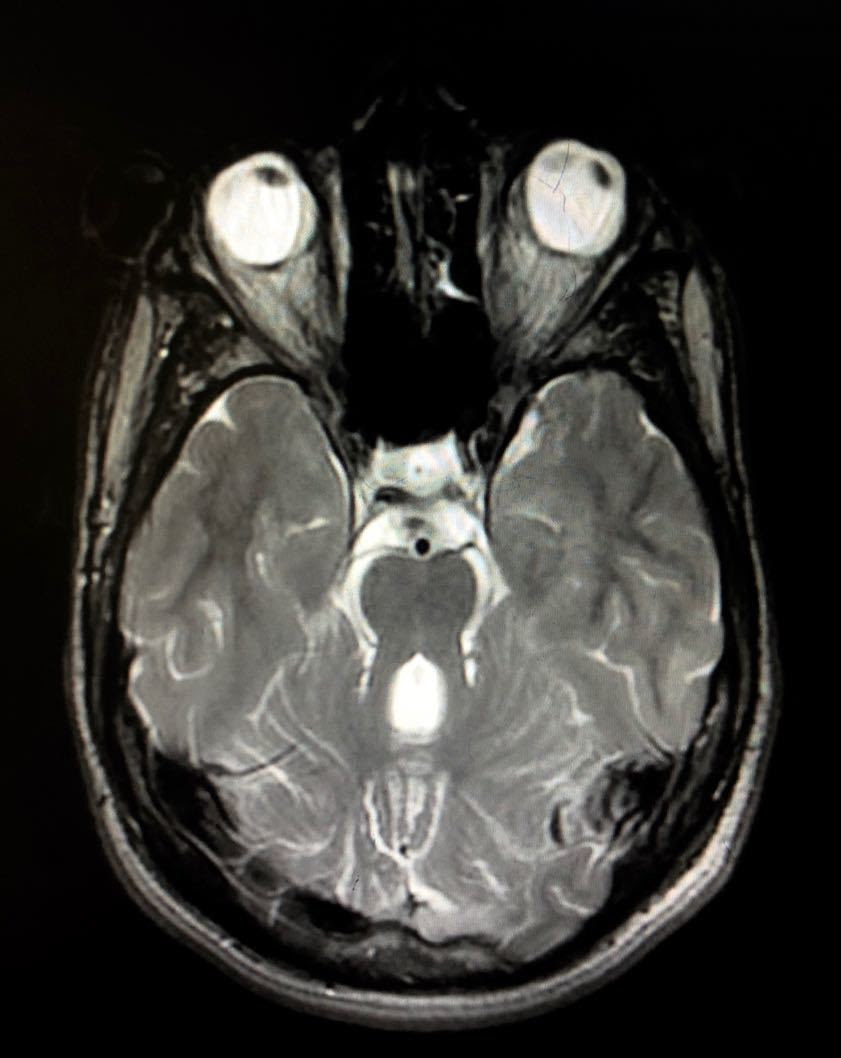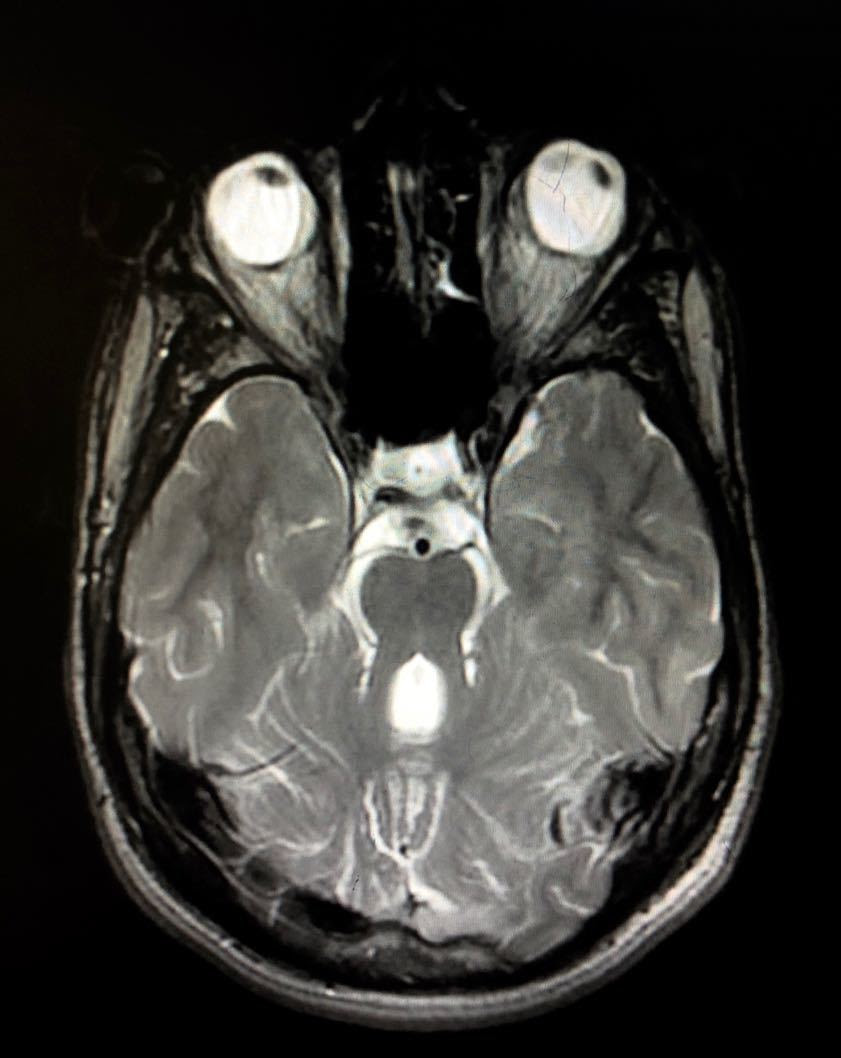Figure 1 Quiz of the Week
A 16-year-old male is brought to the emergency department by his father following a generalized tonic-clonic seizure. He has had these seizures regularly since early childhood, though their frequency has increased over the past two months. As an infant, he had regular episodes of apnea, which resolved at the age of six months. He has a history of developmental delay and ataxia. On examination, the patient is alert and mildly disoriented. Mild generalized hypotonia and strabismus are present, and polydactyly is noted bilaterally. An MRI of the brain is performed, revealing the findings seen here.

Image credit: @AlAshqarA.
Answer: End-stage renal disease
This patient has Joubert syndrome, a rare autosomal recessive condition characterized by hypoplasia of the cerebellar vermis. MR imaging of the brain reveals the pathognomonic “molar tooth sign,” resulting from the presence of prominent superior cerebellar peduncles. Clinical features associated with Joubert syndrome include neonatal respiratory dysfunction, developmental delay, ataxia, hypotonia, and abnormal eye movements, commonly oculomotor apraxia, strabismus, and nystagmus. The disorder is associated with nephronophthisis (NPHP), an autosomal recessive cystic kidney disease which is present in up to 30% of patients, and leads to end-stage renal disease.
Read more and join the discussion now at Figure 1!
Explore cases, quiz yourself, and solve medical mysteries along with thousands of other medical professionals around the world on Figure 1, the free app where doctors expand their clinical knowledge.

